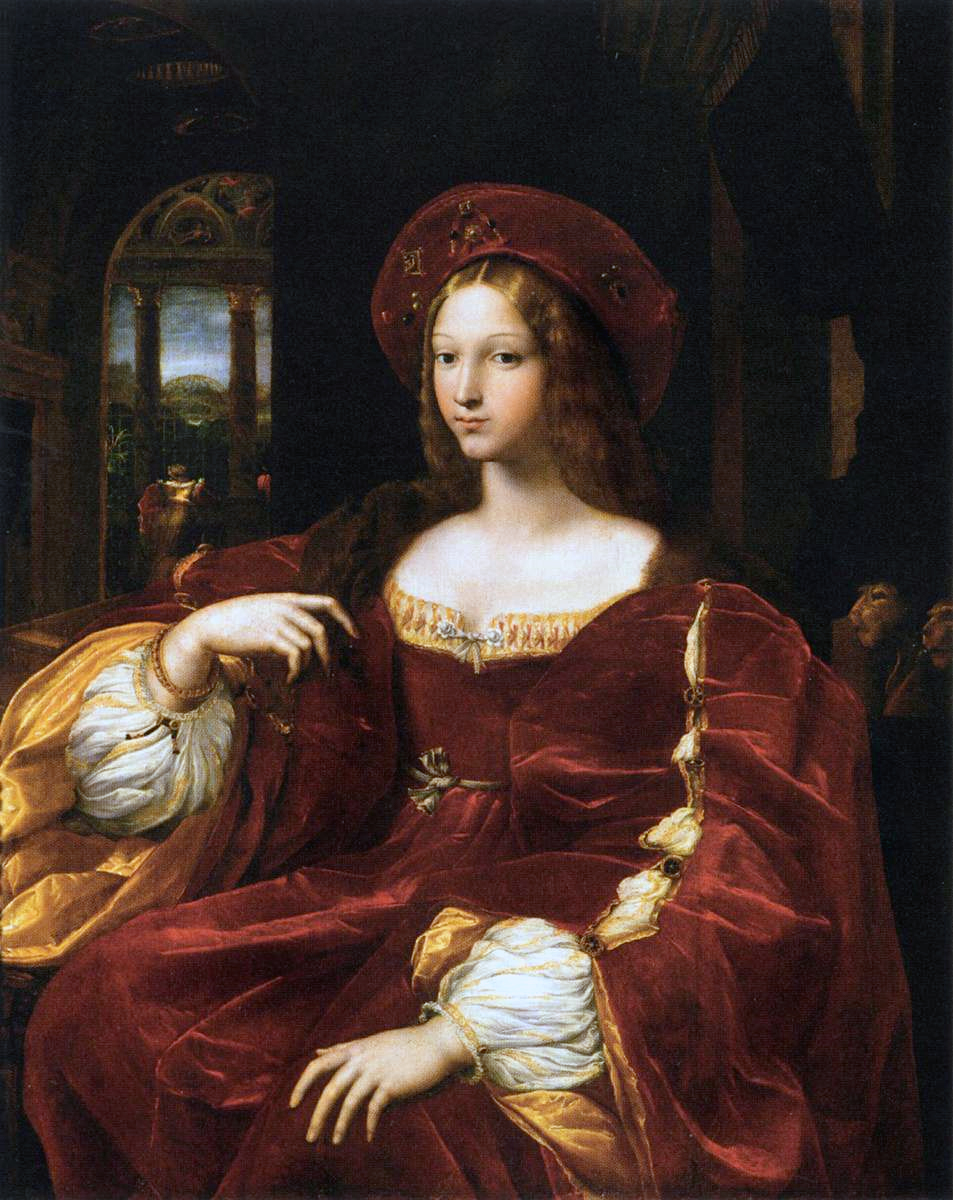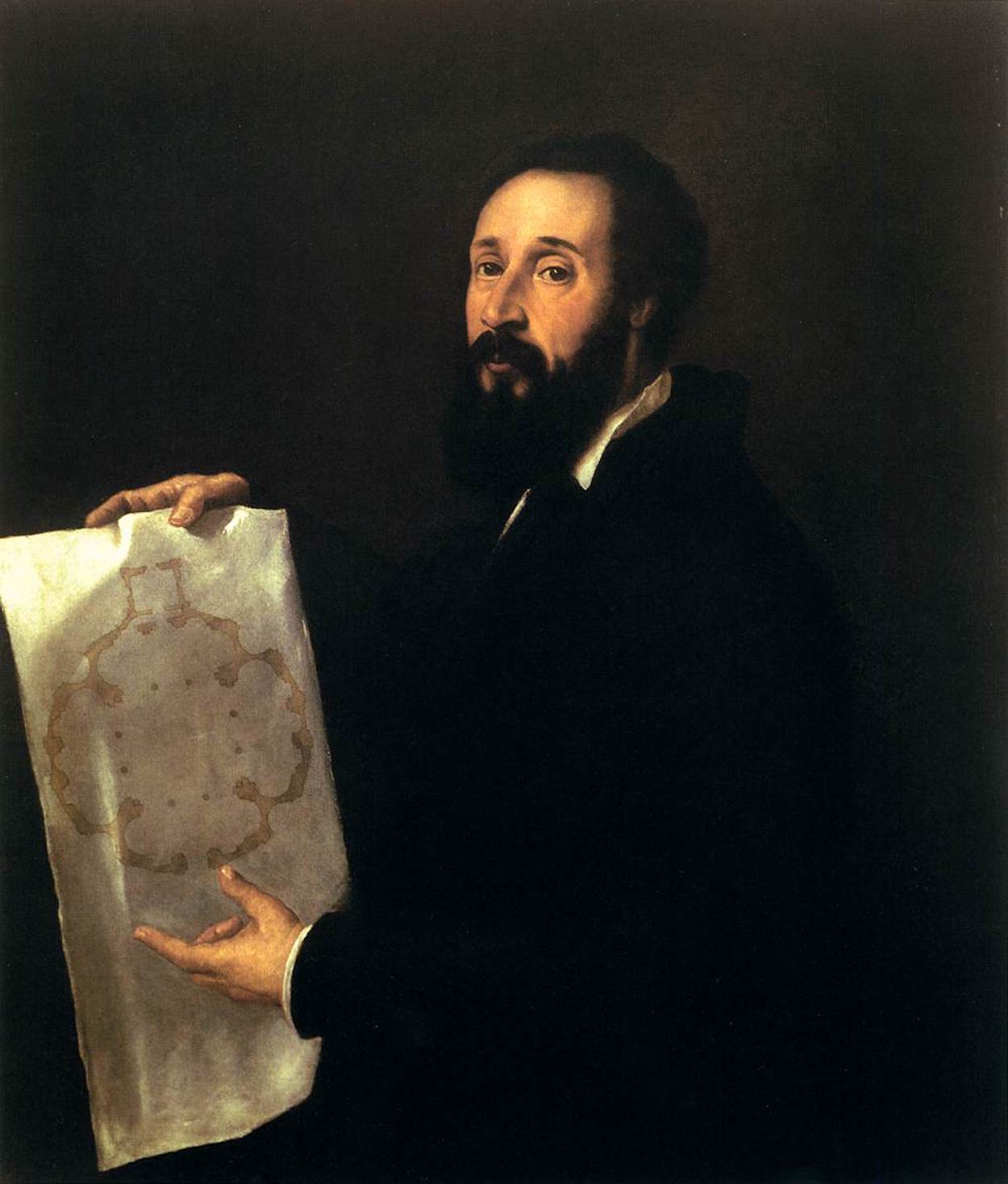This portrait of "the vicereine of Naples" was commissioned from Raphael in 1518 by Cardinal Bibbiena on behalf of Pope Leo X for Francis I of France, who collected portraits of beautiful women. Pierre de Bourdeille, seigneur de Brantôme, took the description to refer to Giovanna d'Aragona (1502 – 1575); a study in 1997 demonstrated that the subject was rather Isabel de Requesens, the wife of Ramón de Cardona, who was viceroy of Naples from 1509 to 1522.
According to Vasari, Raphael sent Giulio Romano, one of his young assistants, to Naples to paint the portrait except for the face, which Raphael was responsible for; documentary evidence survives in Raphael's hand confirming Giulio Romano's work on this commission. The face has indeed been altered; otherwise Vasari's description might also apply to another portrait that has been attributed to Giulio Romano and Raphael: Isabella of Aragon as Mona Lisa, depicting Isabella of Aragon, Duchess of Milan (also known as Isabella of Naples). Opinions vary as to who executed the cartoon for the Portrait of Doña Isabel de Requesens, which was likely reused for that of Isabella of Aragon; Luitpold Dussler considered the painting entirely Giulio Romano's work. However, both portraits are now generally thought to have been executed according to Raphael's design, and the two paintings have been referred to as “Raphael's Gioconda” for their visual references to Leonardo 's Mona Lisa (also known as La Gioconda), which was already in Francis I's collection. It is also possible that the portrait of Isabella of Aragon is a copy; the gallery that holds it, the Doria Pamphilj Gallery in Rome, lists it as "after" Raphael.


 Giulio Romano
Giulio Romano